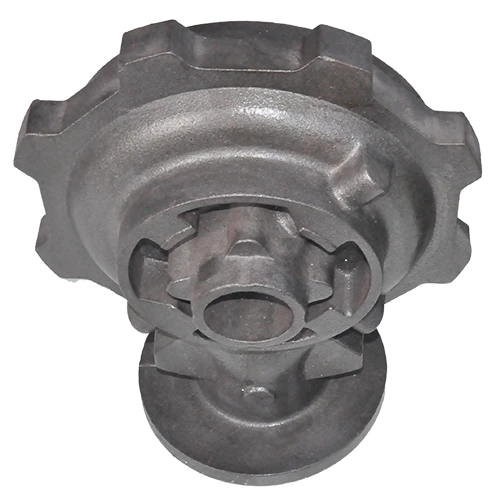Mobile:+86-311-808-126-83
Email:info@ydcastings.com
Exploring the World of Die Casting and Its Impact on Manufacturing Process
Understanding Die Cast Dies A Crucial Component in Manufacturing
Die casting is a manufacturing process that involves forcing molten metal into a mold cavity to create highly accurate and complex shapes. At the heart of this process lies the die cast die, a critical tool that plays an essential role in determining the quality and efficiency of die casting operations. This article delves into the intricacies of die cast dies, their types, applications, advantages, and the factors influencing their performance.
What is a Die Cast Die?
A die cast die is a specialized mold used in the die casting process, typically crafted from high-strength materials such as steel or aluminum. The design of the die needs to accommodate the specific requirements of the component being manufactured, including its geometry, size, and surface finish. Die cast dies are often made from two parts the core and the cavity. The core creates the inner shape of the part, while the cavity forms the outer shape.
Types of Die Cast Dies
There are primarily two types of die cast dies single-cavity and multi-cavity dies.
1. Single-Cavity Dies This type is designed to produce one part at a time. It is often used for manufacturing large components where precision is vital, and the production volume is lower. Single-cavity dies are easier to design and manufacture, making them suitable for prototypes or custom parts.
2. Multi-Cavity Dies These dies can produce several parts simultaneously in one cycle. They are ideal for high-volume production where efficiency and cost-effectiveness are crucial. Multi-cavity dies maximize productivity but require more intricate design and higher initial investment.
Applications of Die Cast Dies
Die cast dies are widely used across various industries, including automotive, aerospace, consumer electronics, and medical devices. The automotive industry, in particular, relies heavily on die casting for components such as engine blocks, transmission cases, and structural parts. The ability to create complex shapes with high dimensional accuracy makes die casting an attractive option for manufacturers looking to optimize performance while minimizing weight.
Advantages of Die Casting
The use of die cast dies offers several significant advantages.
die cast dies

1. Precision and Accuracy Die casting produces parts with tight tolerances and excellent surface finishes, reducing the need for secondary operations.
2. Complex Geometries The process allows for the creation of intricate designs that would be challenging to achieve through traditional machining methods.
3. Material Efficiency Die casting minimizes waste, as excess material can often be recaptured and reused.
4. Cost-Effectiveness for High Volumes While the initial cost of designing and producing a die can be high, the long-term savings in production costs when manufacturing in bulk can be substantial.
Factors Influencing Die Cast Die Performance
The performance and longevity of die cast dies can be affected by several factors.
1. Material Selection The choice of die material influences wear resistance, heat transfer, and overall durability. High-performance tool steels are commonly used to enhance die life.
2. Cooling Systems Proper cooling mechanisms are critical for maintaining consistent die temperatures, which directly affects cycle times and part quality.
3. Surface Treatment Applying surface treatments, such as nitriding or coating, can improve wear resistance and reduce friction, leading to longer die life.
4. Maintenance Practices Regular maintenance and inspection of dies are essential to identify wear or damage early, allowing for timely repairs and minimizing production downtime.
Conclusion
In summary, die cast dies are fundamental to the die casting process, enabling the mass production of complex and precise metal parts. Understanding the types, applications, advantages, and performance factors of die cast dies empowers manufacturers to make informed decisions about their production processes. As technology evolves, innovations in die design and materials continue to enhance the capabilities and efficiencies of the die casting process, ensuring its relevance in the ever-changing landscape of manufacturing.
-
Valve Body Acts as the “Heart” of Flow ControlNewsMay.19,2025
-
Understanding the Importance of ImpellersNewsMay.19,2025
-
Importance of Automobile Water PumpsNewsMay.19,2025
-
How an Engine Oil Pan Works to Keep Your Car LubricatedNewsMay.19,2025
-
Common Materials Used in Pump Impeller ManufacturingNewsMay.19,2025
-
Ball Valve Casting in Modern Pipeline SystemsNewsMay.19,2025











